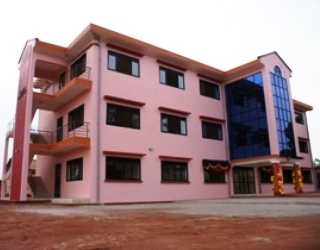Latest Embassy News
U.S. Government Renovates Gulu District Office Building
On Thursday, August, 26, 2010, His Excellency the President of Uganda Mr. Yoweri Kaguta Museveni, U.S. Ambassador to Uganda, Jerry P. Lanier accompanied by USAID acting director John Mark travelled to Gulu to inaugurate the Gulu District’s three story administration office building. The $240,000 renovation will accommodate 100 officers, the office of the Chief Administrative Officer (CAO), the office of the Local Council V (Chairman Norbert Mao), the Gulu District Speaker, the District Peace and Reconciliation Team, and the education, sports, and health departments among others.
The objective of the $240,000 renovation was to increase the visibility and functionality of local government in northern Uganda and is part of the Government of Uganda’s Peace, Recovery and Development Plan’s vision of ‘consolidating state authority’ now that peace has returned to the region.
The construction of this office building began as a Government of Uganda funded initiative in 2002. From 2002 to 2009, construction was put on hold after only 50% of it was completed due to insecurity in the area. In 2009, local government partnered with USAID/NUTI to finally complete the renovation. The building includes large conference rooms and a networked computer lab which NUTI will install at a later date and pay a one year internet subscription.
In his speech, the U.S Ambassador noted that “This building is a direct result of the U.S. Government’s commitment to northern Uganda’s Peace, Recovery, and Development Plan, a recovery plan initiated by the central government and managed by the Office of the Prime Minister. The U.S. fully endorses the PRDP.”
USAID initiated the Northern Uganda Transition Initiative (NUTI) program in June 2008 as the Ugandan government called upon the international community to begin shifting the focus away from life-saving humanitarian assistance for the displaced population toward investing in the basic social service and local government infrastructure needed to help people return home and begin re-building their lives.




